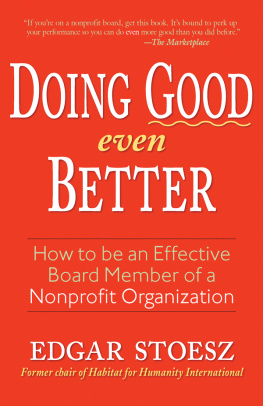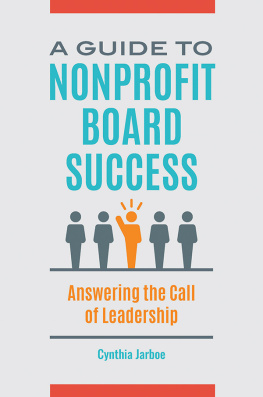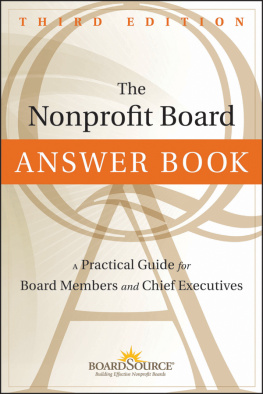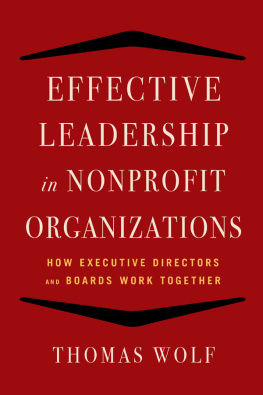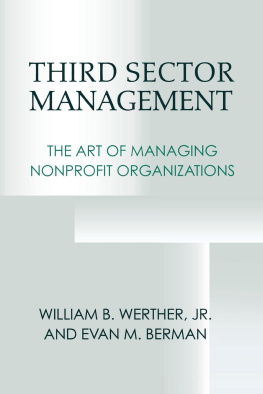Copyright 2015 by Edgar Stoesz
All rights reserved. No part of this book may be reproduced in any manner without the express written consent of the publisher, except in the case of brief excerpts in critical reviews or articles. All inquiries should be addressed to Good Books, 307 West 36th Street, 11th Floor, New York, NY 10018.
Good Books books may be purchased in bulk at special discounts for sales promotion, corporate gifts, fund-raising, or educational purposes. Special editions can also be created to specifications. For details, contact the Special Sales Department, Good Books, 307 West 36th Street, 11th Floor, New York, NY 10018 or .
Good Books is an imprint of Skyhorse Publishing, Inc., a Delaware corporation.
Visit our website at www.goodbooks.com.
10 9 8 7 6 5 4 3 2 1
Library of Congress Cataloging-in-Publication Data is available on file.
Cover design by Cliff Snyder
Print ISBN: 978-1-56148-824-7
Ebook ISBN: 978-1-68099-084-3
Printed in the United States of America
Table of Contents
Exhibits
Acknowledgments
N o man is an island. These classic words were penned by John Donne when he was believed to be on his death bed. I borrow them to acknowledge all the people who helped to shape my life and give it meaning. I owe much to the following persons:
My parents, Anna and Dietrich
My wife of 56 years, Gladys
My teachers, both formal and informal
My mentors who gave me an opportunity to develop and practice my talents
My co-workers who joined me as we together worked to make life better for many
My children and grandchildren who love me
As pertains to this book specifically, I acknowledge with appreciation the good work Phyllis Pellman Good did in editing my work and making it more readable. I also acknowledge the valuable role of Skyhorse Publishing in the publication and marketing of the book.
Preface to the Revised and Updated Edition
I n this little, highly readable book are my learnings from a lifetime of service in a variety of nonprofit and for-profit boards, sometimes as director, often as chair, sometimes as a CEO responsible to a board.
Doing Good Better is a pragmatic book, dealing with boardroom realities, enriched by what Ive drawn from other scholars and practitioners. In 26 short chapters and six exhibits, the book covers the whole gamut of a boards governance responsibility, from servicing the membership to delegating board decisions to the CEO for implementation.
Nonprofits, and many other organizations, are about doing good. Doing Good Better is about helping them do it better and enjoy it more. May you find ideas and suggestions here that make your board work more effective.
This revised and updated edition is a complete re-write of my earlier books dating back to 1994. Readers of the earlier editions will find it a useful review, while new readers will find it to be a more complete and renewed presentation.
More than a recitation of boardroom best practices, Doing Good Better is infused with an attitude of board service. Serving on a board is seen as a privilege, and we should do it with joyful spirits. The benefits of board service accrue to the cause being served, as well as to the director. Those who are willing to serve on the board of a worthy cause are a unique and beautiful class of people who have an other orientation.
At the same time, board service provides an opportunity to discover and develop new skills while making lifelong friendships. It is truly in giving that we receive.
So welcome aboard. Roll up your sleeves. Join in Doing Good Better!
Edgar Stoesz
Summer, 2015
CHAPTER 1
Organizational Greatness Begins with Great People
G reat organizations begin with great people. Apart from people, an organization is only an empty shell. It knows nothing. It can do nothing. It is people that imbue an organization with greatness.
The only way anything ever runs itself, said one successful leader, is downhill. Treeshave you noticed?die from the top. That is true also of organizations.
In his highly acclaimed book, Good to Great and the Social Sectors, Jim Collins suggests that the formula for organizational greatness is: (a) getting the right persons on the bus; (b) getting the wrong persons off the bus; and (c) positioning them on the bus for maximum effectiveness. Organizational greatness is all about people.
Building a great board
Building a better board begins with an objective examination of your current board membership, including the following qualifications:
Competencies: Do you have on your board the skills needed to give direction to the organization you are directing? This includes professional skills in the field of your endeavor, financial savvy, proven leadership ability, human relations competence, and just plain common sense. What do your directors know? What can they do?
Representation: Is your board more or less representative of the membership/constituency? Does it include women and men, young and experienced, and persons representing your ethnic and religious diversity? When your supporters see a picture of your board, you want them to say, We feel well represented by them.
Proven performance: Are there directors on your board who are not pulling their weight or whose attendance record is lacking? Harboring dead wood is not just an inert place at the table. It is a negative. It suggests that poor performance is tolerated at the highest organizational levels.
When the results of this self-analysis are known, you need to act on your findings. The Board Service Committee, an expansion of what was previously known as the Nominating Committee, usually handles this task. It is arguably the most important committee on your board since it holds the key to your future effectiveness.
A frequently asked question is How large should a board be? When a board is too large it becomes unwieldy. Seven to nine is a good number for a small or intermediate sized organization. Twelve is still workable, but anything beyond that becomes unwieldy. An organization with a diverse and scattered membership might feel compelled to have larger boards to achieve broad representation.
The Nominating Committee is arguably the most important committee on a board.
Drawing up the list of candidatesand checking it twice
Once you have identified how many new directors are needed, what competencies are needed, and what representational gaps need to be filled, you are ready to start drawing up the long list of candidates. The Board Service Committee should be in charge of this process. Throw the net out wide. Look for people with a stellar reputation, strong stature and few known negatives. The CEO might have names to suggest, but I caution against constituting a board made up of friends of the CEO.
In the second step, the long list is pared down to the short list, consisting of not more than three of the lead candidates who are then vetted thoroughly. The board should keep on record the files of any persons not making the short list in case it is necessary to re-open the selection process and/or for future openings.
The thoroughness of the vetting process depends on how well the candidates are known. A bad choice can cause havoc with board dynamics and raise questions in the public mind. Unseating a director is more difficult than discharging an unsatisfactory employee. When it is necessary to discharge someone to make room for new blood, do it with the utmost of sensitivity and empathy. Boards should never find themselves so desperate to fill a vacancy that they elect someone with whom they are not well acquainted.


